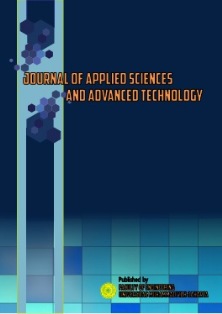Oil Palm Pressed Fiber Valorization: Improving Fiber Processing in Composting with Azotobacter for Use in Potting Media of Brassica rapa
DOI:
https://doi.org/10.24853/jasat.2.3.65-72Keywords:
bioconversion, compost, nitrogen fixing bacteria, oil palm fruit fiber, pakcoyAbstract
Fiber (mesocarp fiber) is a solid waste generated in the oil palm factory which potentially used as fertilizer through composting. Addition of Azotobacter sp. in composting can increase nitrogen content, which improve the quality of compost. The purpose of this research was to determine the effect of the enrichment of Azotobacter sp. in composting of oil palm pressed fiber and analyzing the nutrient content and its potential as a planting medium of pakcoy (Brassica rapa). Descriptive method was used in the process of composting by assessing the physical and chemical properties of the compost produced. Fiber compost testing as a planting medium was carried out using a nonfactorial Randomized Complete Block Design in 3 variations of 30%, 50% and 70% treatment, and each mixed with subsoil. The results of compost physical parameters analysis showed the dark brown color, and the texture showed more crumb in the compost enriched with Azotobacter sp. The best pH was found in the compost treated with the addition of Azotobacter sp., which was 8.36. Analysis of compost application on pakcoy growth showed that the highest leaf area (69.73 cm2) and number of stomata (36.4 mm2)-1) were found in the F2P2 treatment (Azotobacter Fiber Compost 50% + Subsoil 50%); The highest root length (28.38 cm), shoot dry weight (2.58 g), and root dry weight (2.26 g) were found in the F2P3 treatment (Azotobaacter Fiber Compost. 70% + Subsoil 30%). From the results of these experiments, the compost enriched with azotobacter has beneficial effects on crop growth could be attributed to soil amendments.Downloads
References
Direktorat Jendral Perkebunan [DITJENBUN]. 2016. Statistik Perkebunan Indonesia Komoditas Kelapa Sawit 2014 - 2015. Jakarta..
Susanto, J. P., Arif, D. S. dan Nawa, S. 2017. Perhitungan Potensi Limbah Padat Kelapa Sawit untuk Sumber Energi Terbaharukan dengan Metode LCA. Jurnal Teknologi Lingkungan, 18(2):165-172. Pusat Teknologi Lingkungan, BPPT. Tangerang Selatan.
Wahyono, F.L. Sahwadan Dan F. Suryanto. 2008. Tinjauan Terhadap Perkembangan Penelitian Pengolahan Limbah Padat Pabrik Kelapa Sawit. J. Tek. Ling Edisi Khusus 8(4):64-74.
Siddiqi, A.A. 2006. Agro Technology of Organic Farming. Department of Health Behavior and Health. Chapel Hill.
Hindersah, R dan T Simarmata. 2004. Kontribusi rizobakteri Azotobacter dalam meningkatkan kesehatan tanah melalui fiksasi N2 dan produksi sitohormon di rizosfir. Jurnal Natur Indonesia 6(4): 127-133.
Sattar, M.A., Rahman, M.F., Das, D.K and Choudhury. 2008. Propects of Using Azotobacter, Azospirillum and Cyanobacteria as Supplements of Urea Nitrogen for Rice Production in Bangladesh. Bangladesh..
Yunindanova, M. B., Herdhata, A., Dan Dwi, A. 2013. Pengaruh Tingkat Kematangan Kompos Tandan Kosong Sawit Dan Mulsa Limbah Padat Kelapa Sawit Terhadap Produksi Tanaman Tomat (Lycopersicon Esculentum Mill.) Pada Tanah Ultisol. Journal of soil science and agroclimatalogy, 10(2):91-100.
Kala, D.R., Rosenani, A.B., Fauziah, C.I., Thohirah, L.A. 2009. Composting Oil Palm Wastes and Sewage Sludge For Use in Potting Media of Ornamental Plants. Malaysian Journal of Soil Science. 13:77-91.
Widarti, B.N., Wardah, K. W., dan Edhi, S. 2015. Pengaruh Rasio C/N Bahan Baku Pada Pembuatan Kompos Dari Kubis Dan Kulit Pisang. Jurnal Integrasi Proses, 5(2):75–80.
Sahwan, F.L. 2016. Kaji Terap Teknologi Komposting Untuk Penanganan Limbah Ternak Sapi Potong. Jurnal Teknologi Lingkungan. 17(2):92-99
Hoe, T.K., Sarmidi, M.R., Rabiah, S.S., Alwee, S., Zakaria, Z.A. 2016. Recycling of Oil Palm Empty Fruit Bunch as Potential Carrier for Biofertilizer Formulation. Jurnal Teknologi (Sciences & Engineering). 78(2):165-170.
Wibawati, R. E. 2013. Rasio C/N, Kandungan Kalium (K), Keasaman (Ph), Dan Bau Kompos Hasil Pengomposan Sampah Organik Pasar Dengan Starter Kotoran Sapi Dalam Berbagai Dosis. [Skripsi]. Semarang: Ikip Pgri Semarang.
Mahdy, A.M. 2011. Comparative Effects of Different Soil Amendments on Amelioration of Saline-sodic soils. Soil and Water Research. 6(4):205-216.
Peraturan Menteri Pertanian [PERMENTAN]. 2011. Peraturan Menteri Pertanian Nomor 70/Permentan/SR.140/10/2011 Tentang Pupuk Organik, Pupuk Hayati dan Pembenah Tanah. Retrieved from http://perundangan.pertanian.go.id/admin.file/permentan-70-11/pdf.
Singh, D.P., Prabha, R., Renu, S., Sahu, P.K., Singh, V. 2019. Agrowaste Bioconversion and Microbial Fortification Have Prospects for Soil Health, Crop Productivity, and Eco-enterprising. International Journal of Recycling of Organic Waste in Agriculture. https://doi.org/10.1007/s40093-019-0243-0
Rahayu, Syamsiyah, J. Cahyani, V. R., and Fauziah, S. K. 2019. The Effects of Biochar and Compost on Different Cultivars of Shallots (Allium ascalonicum L.) Growth and Nutrient Uptake in Sandy Soil Under Saline water. Sains Tanah Journal of Soil Science and Agroclimatology, 16(2): 216-228
Azlansyah, B. 2013.Pengaruh lama pengomposan tandan kosong kelapa sawit (TKKS) terhadap pertumbuhan dan perkembangan bibit kelapa sawit (Elaeis guineensis Jacq.) [Skripsi]. Pekanbaru (ID) Fakultas Pertanian UR.
Rodrigues, M.A., Ladeira, L.C., Arrobas, M. 2018. Azotobacter-enriched Organic Manures to Increase Nitrogen Fixation and Crop Productivity. European Journal of Agronomy. 93:88-94
Anisyah, F., Sipayung, R., Hanum, C. 2014. Pertumbuhan dan Produksi Bawang Merah dengan Pemberian Barbagai Pupuk Organik. Jurnal Online Agroekoteknologi. 2(2):482-496.
Banyo, Y. dan Ai, N.S., 2011. Konsentrasi Klorofil Daun Sebagai Indikator Kekurangan Air Pada Tanaman. Jurnal Ilmiah Sains.11(2):30-38.
Downloads
Published
Issue
Section
License
COPYRIGHT POLICY
The author(s) of an article published in the Journal of Applied Sciences and Advanced Technology (JASAT) retains ownership of the intellectual property rights in work (s).
PUBLISHING RIGHTS
The author(s) of an article published in the Journal of Applied Sciences and Advanced Technology (JASAT) have unrestricted publication rights. The authors give the Journal of Applied Sciences and Advanced Technology (JASAT) the right to publish the article and designate the Faculty of Engineering Universitas Muhammadiyah Jakarta Publishing as the original publisher of the article.
LICENSING POLICY
JASAT is an open-access journal that follows the Creative Commons Non-Commercial 4.0 International License (CC BY-NC 4.0), which states that:

Under this license, the reusers must give appropriate credit, provide a link to the license, and indicate if changes were made. Users may do so in any reasonable manner, but not in any way that suggests the licensor endorses users or their use.
Please take the time to read the whole license agreement (https://creativecommons.org/licenses/by-nc/4.0/). As long as reusers follow the license conditions, the owner cannot withdraw these freedoms. The following components are included under this license:
 Attribution: Users must provide appropriate attribution, including a link to the license, and indicate whether or not they made any modifications. Users are free to do so reasonably, but not in a manner that indicates the licensee approves of their usage.
Attribution: Users must provide appropriate attribution, including a link to the license, and indicate whether or not they made any modifications. Users are free to do so reasonably, but not in a manner that indicates the licensee approves of their usage.
 NonCommercial: Users may not use the material for commercial purposes.
NonCommercial: Users may not use the material for commercial purposes.












_2.png)


1.png)

2.png)
